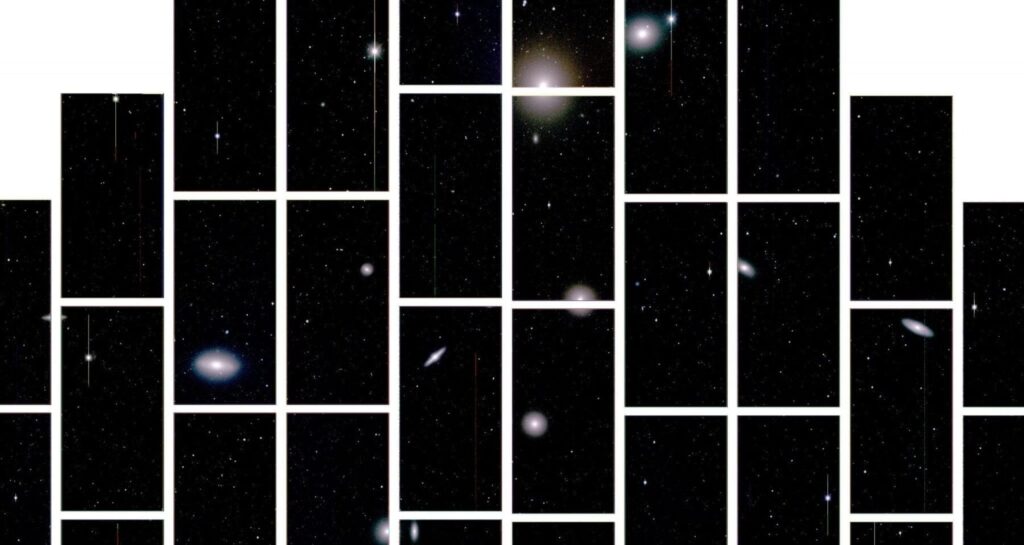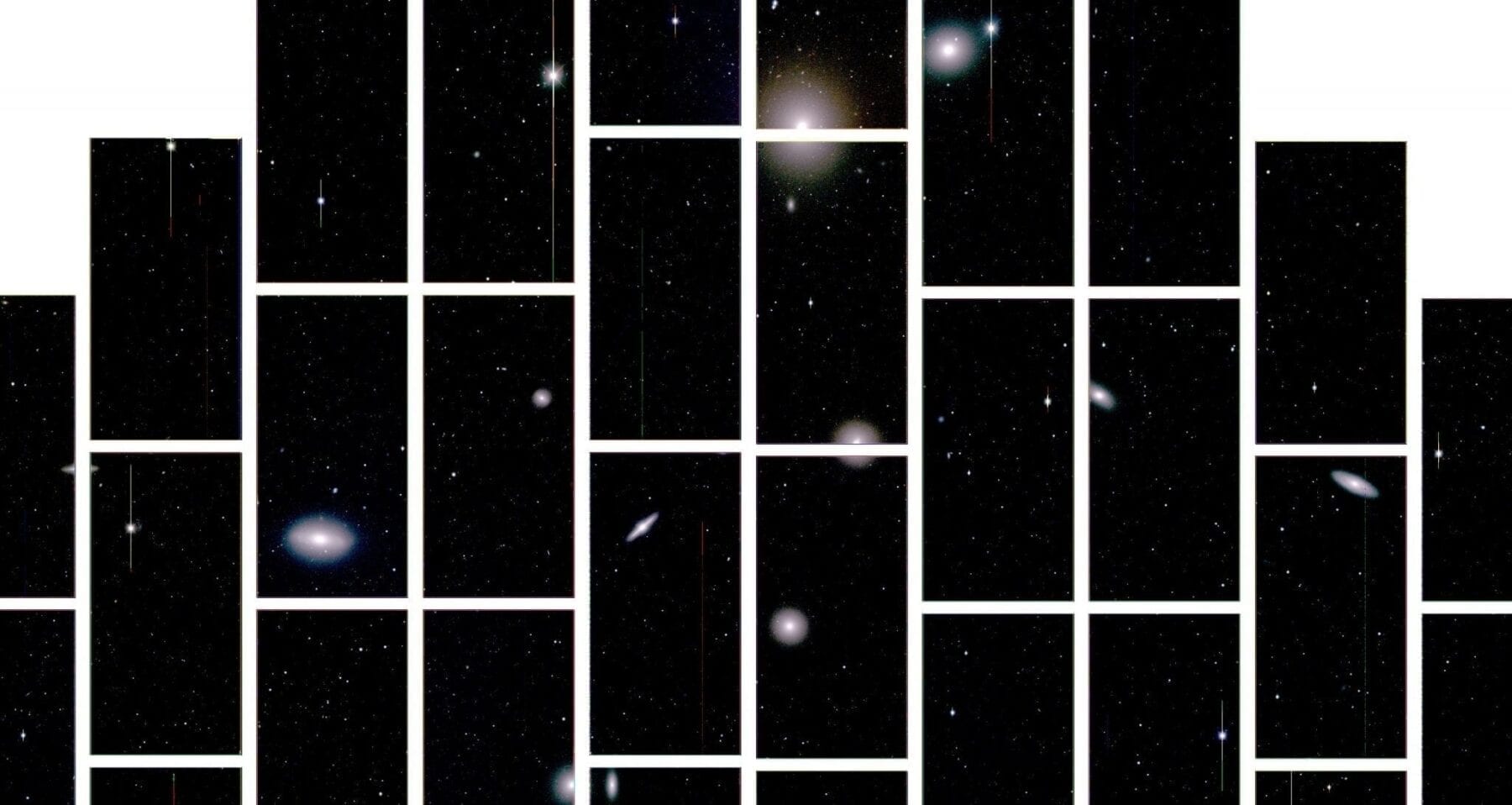
The Dark Energy Camera does more than its name would lead you to believe
The Dark Energy Camera, or DECam, peers deep into space from its mount on the 4-meter Victor Blanco Telescope high in the Chilean Andes.
Thirty percent of the camera’s observing time—about 105 nights per year—go to the team that built it: scientists working on the Dark Energy Survey.
Another small percentage of the year is spent on maintenance and upgrades to the telescope. So who else gets to use DECam? Dozens of other projects share its remaining time.
Many of them study objects far across the cosmos, but five of them investigate ones closer to home.
Overall, these five groups take up just 20 percent of the available time, but they’ve already taught us some interesting things about our planetary neighborhood and promise to tell us more in the future.
Far-out asteroids
Stony Brook University’s Aren Heinze and the University of Western Ontario’s Stanimir Metchev used DECam for four nights in early 2014 to search for unknown members of our solar system’s main asteroid belt, which sits between Mars and Jupiter.
To detect such faint objects, one needs to take a long exposure. However, the paths of these asteroids lie close enough to Earth that taking an exposure longer than a few minutes results in blurred images. Heinze and Metchev’s fix was to stack more than 100 images taken in less than two minutes each.
With this method, the team expects to measure the positions, motions and brightnesses of hundreds of main belt asteroids not seen before. They plan to release their survey results in late 2015, and an early partial analysis indicates they’ve already found hundreds of asteroids in a region smaller than DECam’s field of view—about 20 times the area of the full moon.
Whole new worlds
Scott Sheppard of the Carnegie Institution for Science in Washington DC and Chad Trujillo of Gemini Observatory in Hilo, Hawaii, use DECam to look for distant denizens of our solar system. The scientists have imaged the sky for two five-night stretches every year since November 2012.
Read more: DECam’s nearby discoveries
The Latest on: Dark Energy Survey
[google_news title=”” keyword=”Dark Energy Survey” num_posts=”10″ blurb_length=”0″ show_thumb=”left”]
via Google News
The Latest on: Dark Energy Survey
- X-ray satellite XMM-Newton sees 'space clover' in a new lighton May 2, 2024 at 7:42 am
Astronomers have discovered enormous circular radio features of unknown origin around some galaxies. Now, new observations of one dubbed the Cloverleaf suggest it was created by clashing groups of ...
- Homeowners say this clean energy industry has dirty secreton May 1, 2024 at 2:22 pm
The homeowners interviewed all have different solar companies and faced different issues, but all were left in the dark for months or even years about problems plaguing their systems. Yahoo Sports ...
- Euclid telescope: Scientist reports on his quest to understand the nature of dark matter and dark energyon May 1, 2024 at 7:47 am
In contrast, dark energy pushes things apart ... This, however, meant a complete overhaul of the planning of the survey. The problems did not stop there. Radiation from the sun continuously pushes ...
- Dark skies over beauty spot to be protectedon April 30, 2024 at 11:56 pm
The measures have been recommended to ensure Upper Nidderdale and moorland near Masham remain home to some of the darkest skies in England. A report to the council identified that lighting on farms ...
- First year of DESI results unveil new clues about dark energyon April 30, 2024 at 5:00 pm
Researchers at The Ohio State University played a major role in analyzing the first year of data from the Dark Energy Spectroscopic Instrument’s survey into the history of the universe.
- 5 Reasons to Eat More Mushroomson April 30, 2024 at 12:05 pm
Functional fungi products range from powders, capsules and gummies to power bars and beverages of all kinds like coffee, tea, juices, shots and energy drinks ... Often found in Asian cuisine, these ...
- Euclid telescope: A scientist tells us of his quest to understand the nature of dark matter and dark energyon April 30, 2024 at 9:18 am
Back when Henk Hoekstra started his PhD, atmosphere turbulence and optical imperfections prevented us from accurately observing dark matter. He tells us why Euclid is a game changer.
- BREAD experiment tracks dark photons to new levelson April 30, 2024 at 7:00 am
A novel detector designed to search for so-called “dark” photons has placed unprecedented constraints on where this type of dark matter might be found. The detector uses a coaxial dish antenna to trap ...
- The dark side of solar power: Some of America’s most productive farmland is at riskon April 29, 2024 at 3:00 pm
No one knows how much cropland nationwide is currently under solar panels or leased for possible future development.
- The Mysterious ‘Dark’ Energy That Permeates the Universe Is Slowly Erodingon April 28, 2024 at 4:00 am
Physicists call the dark energy that drives the universe “the cosmological constant.” Now the largest map of the cosmos to date hints that this mysterious energy has been changing over billions of ...
via Bing News










